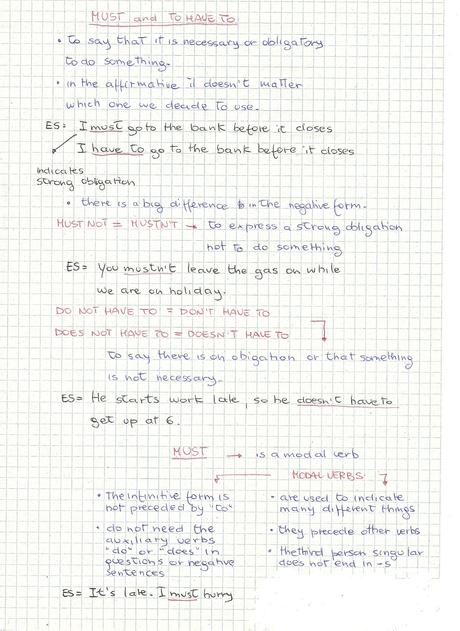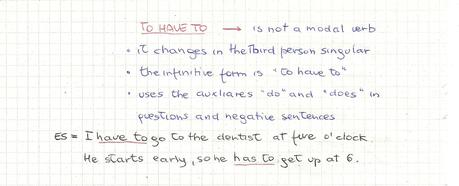Now we are going to look at two verbs used in English to indicate obligation. Often people get confused with the modal verb " must" and the verb " to have to" and are unsure how to use them correctly. I will show you how.
Oggi daremo un'occhiata a due verbi che si usano in inglese per esprimere un obbligo. Le persone si confondono spesso con il verbo modale "must" ed il verbo "to have to" e non sanno come usarlo correttamente. Oggi te lo spiego!
Both " must" and " to have to" express obligation, often strong obligation depending on the tone of the speaker or the situation. However, there is a slight difference in the way they are used.
Sia "must" che "to have to" esprimono un obbligo, spesso molto autorevole in base al tono dell'emittente. Tuttavia esiste una leggera differenza tra i due.
" must" often shows that the obligation is not external or is not a rule or law. It is expressed by the speaker and is often the speaker's opinion. For example,
"must" di solito esprime un obbligo che non viene dall'esterno, che non è una regola né una legge. Viene espresso dall'emittente e di solito è una sua opinione. Ad esempio:
" must" often indicates stronger obligation than " to have to ".
" to have to" shows us that the obligation comes from something or someone else. Normally it is a law or rule. For example:
"to have to" indica che l'obbligo proviene da qualcosa o qualcun altro. Di solito è una legge o una regola. Ad esempio:
They take on totally different meanings, however, when used in the negative.
" must not" (or its contracted form " mustn't ") expresses prohibition.
do not have to (or its contracted form don't have to) or does not have to (or its contracted form doesn't have to) are used to state that there is NO obligation to do something or that something is not necessary.



